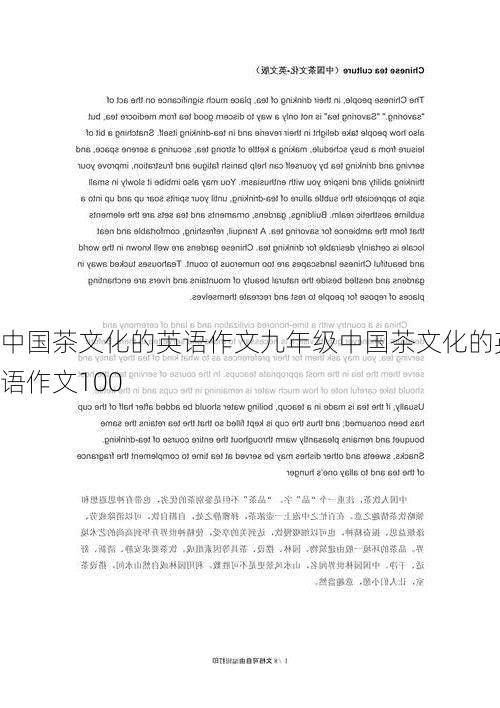The Enduring Allure of Chinese Tea Culture
The aroma of freshly brewed tea, the delicate dance of steaming water as it meets the leaves, the quiet contemplation that follows – these are the hallmarks of Chinese tea culture, a tradition that has captivated the world for centuries. As a student deeply immersed in this fascinating realm, I am continually drawn to its profound influence on Chinese society and its enduring appeal to people from all walks of life.

The origins of Chinese tea culture can be traced back thousands of years. Legend has it that Shennong, the mythical Chinese Emperor and father of agriculture, discovered tea's medicinal properties when a leaf from a wild tea tree fell into his boiling water. Over time, tea transitioned from a medicinal drink to a staple beverage and, eventually, a cornerstone of social life.
The significance of tea in Chinese culture extends far beyond its simple consumption. It represents a philosophy, a ritual, and a profound connection to the natural world. The art of preparing tea, from selecting the right leaves to controlling the water temperature and brewing time, requires both skill and patience. It is a process that demands focus and mindfulness, allowing individuals to connect with the present moment and appreciate the subtle nuances of the tea itself.
The enjoyment of tea is also deeply entwined with social interaction. Whether gathered in a traditional teahouse or in the comfort of one's home, sharing tea with friends and family is a treasured tradition. Tea serves as a catalyst for conversation, a shared experience that fosters intimacy and strengthens bonds. The ritual of tea preparation and the quiet contemplation that follows create a sense of peace and harmony, setting the stage for meaningful conversations and a deeper understanding of one another.
Furthermore, the diverse array of tea varieties found in China is a testament to the rich and nuanced nature of this culture. From the robust and earthy flavors of Pu'er tea to the delicate floral notes of Jasmine tea, each type possesses unique characteristics that reflect the region in which it is grown and the expertise of the tea masters who cultivate it. The process of discovering new tea varieties and learning about their origins is an exciting journey that deepens one's appreciation for the breadth and complexity of Chinese tea culture.
To further illustrate the multifaceted nature of Chinese tea culture, let's examine some key elements:
| Element | Description |
|---|---|
| Types of Tea | China boasts a wide variety of teas, each with unique characteristics and traditions. Some popular types include: - Green Tea: Unfermented and known for its refreshing taste and health benefits. - Black Tea: Fully fermented and characterized by its strong, robust flavor. - Oolong Tea: Partially fermented with a wide range of flavors and aromas. - White Tea: Lightly processed and renowned for its delicate and subtle flavor. - Pu'er Tea: Fermented and aged, gaining complexity over time. |
| Tea Ceremony | The Chinese tea ceremony is a meticulously crafted ritual that emphasizes respect, mindfulness, and harmony. It involves a specific sequence of steps, from preparing the tea to serving it and sharing it with guests. |
| Teaware | Traditional teaware plays a crucial role in the tea experience. From exquisite porcelain teapots and cups to intricately designed tea trays, each piece adds a layer of beauty and elegance to the tea ritual. |
| Tea Culture in Literature and Art | Chinese tea culture has inspired countless works of literature, poetry, and painting. From classic poems that praise the virtues of tea to paintings that capture the serene ambiance of teahouses, the art of tea is deeply woven into Chinese culture. |
The impact of Chinese tea culture extends beyond the borders of China, influencing tea traditions around the world. Tea houses and tea shops can be found in many countries, serving as places where individuals can experience the calming rituals and unique flavors of this ancient tradition.
While the specific practices and customs may vary across different regions and tea types, the underlying principles of Chinese tea culture remain constant: mindfulness, respect, and a deep appreciation for the beauty and simplicity of the tea experience. It is a culture that invites us to slow down, to savor the present moment, and to connect with others through the shared experience of a simple cup of tea.


























